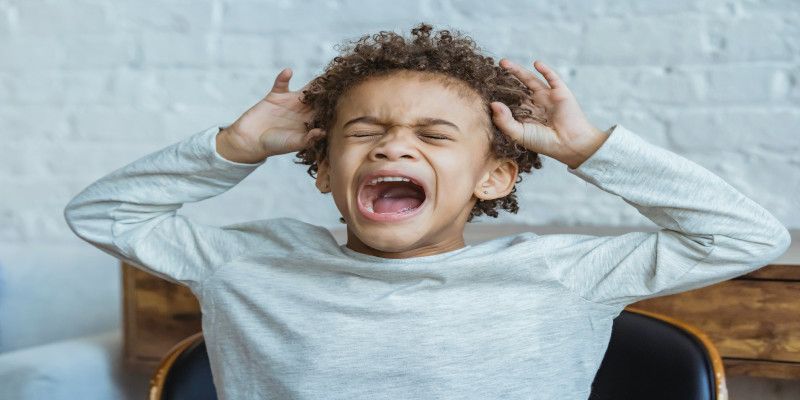Table of Contents
ToggleMost of us have experienced anxiety at some point during our lives. An example that might ring a bell for many people is having to deliver a presentation in front of a class or a large crowd.
While certainly not everyone experiences anxiety in such cases, a large group does experience symptoms related to undergoing anxiety such as a racing heartbeat, fast and shallow breathing, an upset stomach, and possibly even dizziness.
Feeling anxiety is normal in some cases. But being in this state all the time, or if it impacts your daily functioning, is not okay.
Luckily enough, anxiety disorders are treatable. And most people can go back and live a normal life, or at least function normally again.
The 6 major types of anxiety disorders are:
- Generalized anxiety disorder (GAD)
- Panic disorder
- Social anxiety disorder
- Phobia-related disorders
- Separation anxiety disorder
- Agoraphobia
However, it should be noted that some literature such as the DSM V classifies 11 types of anxiety instead of 6. Let’s explain each one of them in depth.
How many types of anxiety are there in the DSM 5?

There are 11 types of anxiety disorders in the DSM 5. Namely:
- Generalized anxiety disorder
- Panic disorder
- Social anxiety disorder
- Separation anxiety
- Selective mutism
- Substance/medication-induced anxiety disorder
- Other specified anxiety disorder
- Anxiety disorder due to another medical condition
- Unspecified anxiety disorder
- Agoraphobia
- Specific phobias
Without further ado, let me explain those eleven conditions more thoroughly.
Generalized anxiety disorder
A generalized anxiety disorder conveys that the person in question is constantly worrying about everyday challenges and situations to an abnormal degree and out of proportion with the threat that the situation poses.
Sufferers tend to feel a surreal amount of worry and fear with no apparent reason.
It is characterized by an intense fear that typically lasts for months, and in extreme cases even years.
It causes problems with people’s concentration since they’re so preoccupied with their concerns and negative thoughts that it’s hard to focus on the specific task at hand.
Panic disorder

A panic disorder is a mental health illness/disorder wherein a person experiences multiple repeated panic attacks.
People suffering from a panic disorder typically have a feeling of losing control. Due to this, they might experience extreme feelings of fear and uncomfortableness.
A panic disorder can have a specific reason. But oftentimes, there’s no apparent reason as to why people experience those panic disorders.
People undergoing a panic attack may experience symptoms such as dizziness, fear of losing control, fear of dying, racing heart, sweating, and trembling.
Social anxiety disorder
Social anxiety disorders are distinguished by a fear of social situations, or due to a fear of being negatively judged and perceived by others in a social situation.
People suffering from a social anxiety disorder often go to great lengths to prevent putting themselves in those social situations that trigger their social anxiety.
Unfortunately, staying away from the issue means you’re fleeing while in the fight or flight situation. And what we run away from, tends to grow in strength.
This can lead to problems at home, work, school, and even with close friends.
Separation anxiety

This stands for an intense fear of being away from home, being separated from your loved ones such as family, or good friends, and overall being left without a caring person to connect with.
Since they have a fear of getting separated, areas such as going to school, work, or even out of the house can become severely impaired. They may also become very worried that something will happen to the person(s) they’re attached to.
Selective mutism
Selective mutism is typically present in children, but can also rarely be seen in adults.
It means that the person in question cannot talk in some specific social situations. It’s important to treat selective mutism as soon as the issue arises to prevent it from persisting in adulthood.
Solving the issue is essential because being able to communicate well and clearly with one another is necessary to create new friendships and long-lasting bonds.
Furthermore, it is not a communication disorder. We know this for a fact since the child or adult in question can usually talk and enunciate without problems in most situations.
This disorder regularly starts at a pivotal moment in the child’s life, such as starting preschool. The issue must be present for at least one month to get the diagnosis of selective mutism.
Substance/Medication-induced anxiety disorder

An anxiety disorder after ingesting a substance or medication such as alcohol, drugs, or medication.
The anxiety disorder can manifest itself during the intoxication, but also after the poisoning effects wear off, and we’re left with the withdrawal effects.
To differentiate generalized anxiety from substance/medication-induced anxiety, the anxiety can not have been present before taking said substances.
It is known that medicine and substances such as alcohol can make anxiety that’s already present worse. Yet, this doesn’t count as a medication-induced anxiety disorder.
Other specified anxiety disorder
This is when you have most of the criteria of an anxiety disorder, but not all the symptoms that are typically present.
You could be suffering from intense stress, for example. Yet, there could be an absence of the other symptoms that would be needed to diagnose an anxiety disorder.
Anxiety disorder due to another medical condition

This occurs when you’re suffering from a medical condition that causes you to experience extreme stress, anxiety, panic, phobia, or fear.
Important to note is that worrying about, or having anxiety about your present medical condition itself is not seen as an anxiety disorder.
The stress and anxiety you experience should be due to your medical condition(s) for it to be considered a specified anxiety disorder.
Think of experiencing anxiety and stress due to a thyroid disease, for example. This is what we call comorbid anxiety.
Unspecified anxiety disorder
Unspecified anxiety disorder means that you experience panic and anxiety attacks, but don’t meet the full standards of symptoms of some other form of anxiety disorder.
An unspecified anxiety disorder is typically diagnosed in a hospital or retirement home when there’s limited available information to make a diagnosis.
Agoraphobia

Agoraphobia stands for the fear of being in situations and/or locations that cause us to experience feelings of distress, entrapment, helplessness, and panic.
People may get so afraid that they simply refuse to leave their own house out of fear of getting into situations they dread, such as fearing a crowd, taking the elevator, or walking through malls.
They typically have repeating attacks of panic and anxiety, especially in those fearful situations, or even thinking about getting in one of those challenging circumstances. This can cause people to become avoidant of said triggers, only for the fear to become worse over time.
Specific phobias
Specific phobias are an intense fear of a specific stimulus. They experience extreme anxiety when they expect to be exposed to a stimulus they’re afraid of.
There are typically 5 categories of specific phobias:
- natural environment type
Think of things such as heights, and water.
- Animal type

For example, spiders, dogs, cats, and even ducks can be considered sources of anxiety.
- Situational type
Examples include confined spaces such as elevators, being in busy public places, and flying on airplanes.
- Blood injection type
A well-known specific phobia type, with popular examples such as being afraid of needles.
- Other type
Phobias that do not meet all the standards to be included in one of the previous four categories.
- natural environment type
What are the 6 common anxiety disorders?
The 6 major types of anxiety disorders are:
- Generalized anxiety disorder
- Phobias
- Social anxiety disorder
- Panic disorder
- Separation Anxiety Disorder
- Obsessive Compulsive Disorder and Post Traumatic Stress Disorder
Frequently Asked Questions (FAQ)
Is anxiety a mental illness?

It depends. Anxiety can be a sign of a present mental illness, although not always.
But anxiety can indeed be, or become a mental illness. Anxiety disorders are the most common mental condition out there.
It becomes a mental illness when it’s illogical, unreasonable, and negatively impacts our daily lives. In short, when anxiety interferes so much with our daily lives that we can’t function normally or properly anymore.
Experiencing anxiousness as an emotion, however, is not the same as suffering from a mental illness. Most people undergo anxiety and stress at some point in their lives without ever enduring a mental disorder.
For example, most of us feel short-term, but fleeting worry if we need to give a presentation in front of a large crowd, or when we feel the burden and stress of a hard examination.
Fortunately enough, anxiety disorders are treatable, and even fixable entirely if we are willing to put in the work and time.
Does anxiety cause hyperawareness?

Anxiety may cause hyperawareness, although not always.
Mental health anxiety OCD
Regarding mental health and anxiety, OCD shows itself as being hyper-aware of mental processes that keep you tangled up in anxiety.
This uneasiness can cause you to become preoccupied with intrusive, uncontrollable negative thoughts about mental health.
Depersonalization
Anxiety can also lead to depersonalization, which means that the afflicted person’s mind becomes separated from their sense of being.
Depersonalization happens when we become overly aware of ourselves and our environment. Thus, anxiety can indeed lead to becoming hyper-aware through depersonalization.
Anxiety can lead to overthinking behavior

Furthermore, being fearful and experiencing stress about something can cause us to overanalyze that subject. While being introspective and analytical is a good thing, overthinking things is not.
Overthinking behavior can become a chronic problem and can cause us to become hypervigilant of our surroundings, but also of ourselves.
Does anxiety make you hyper-aware of your body?
It doesn’t always make you hyper-aware of your body. But in some instances, it just might.
Let’s say you’re anxious about becoming overweight, or always looking your best. This might lead to you overanalyzing your appearance, and constantly looking in the mirror to criticize every little imperfection that you possess.
This can lead to multiple mental disorders such as perfectionism OCD, and most certainly also hypervigilance.
Are panic attacks a form of anxiety?

Panic attacks are the most intense category of anxiety. They can happen in an instant and without any noticeable trigger. Of course, sometimes there is a stressor that we can identify as the cause of the panic attack.
Are panic attacks anxiety-evoking?
Yes, panic attacks are anxiety-evoking. People who undergo a panic attack experience the most intense form of anxiety.
That sensation can be so intense that it’s possible to faint from such an attack.
Blacking out and the other large array of physical symptoms that one might experience during a panic attack regularly come from abrupt changes in the way we’re breathing. This frequently leads to inhaling too little oxygen, all the while exhaling too much carbon dioxide, which can make you faint.
Is OCD a type of anxiety?

No, OCD is not a type of anxiety. However, there is some overlap between both disorders.
Nevertheless, some key differences set anxiety and OCD apart from one another.
The main difference is that OCD is characterized by obsessive thoughts that often end up in compulsive actions. Someone suffering from anxiety or an anxiety disorder will feel a more general feeling of distress and worry, without the accompanied compulsions that go together with OCD.
Until, 2013, The Diagnostic and Statistical Manual of Mental Disorders classified OCD as a type of anxiety disorder since anxiety can be a symptom of OCD. However, since the new, recent edition in 2013, the manual lists OCD as an entirely separate disorder.
OCD can now be found under the condition section of “obsessive-compulsive disorders” in the DSM manual. This includes other disorders such as hoarding disorder, hair-pulling disorder, and body dysmorphic disorder.
More info about the different types of OCD can be found here. It’s important to diagnose OCD as early as possible since it can have a detrimental impact on our daily functioning.
What does GAD 7 anxiety stand for?

GAD 7 anxiety stands for Generalized Anxiety Disorder Questionnaire. Or, in short, GAD-7.
It is a questionnaire that can be self-administered by a patient as a tool to screen if they’re suffering from a generalized anxiety disorder (GAD) or not. Furthermore, it also measures the severity of the anxiety if you are suffering from a GAD.
The survey has 7 questions. The score for each question ranges from 0-4. This means that total scores range from 0 to 21. The higher your total score, the more severe your generalized anxiety disorder is. Thus, the higher the number, the more anxiety you will have.
The scoring goes as follows:
- 0–4: Minimal anxiety
- 5–9: Mild anxiety
- 10–14: Moderate anxiety
- 15–21: Severe anxiety
It is a Professional Reference tool that’s designed to be used by medical professionals such as doctors, and psychologists.
Its validity is based upon empirical evidence, and it’s written by UK doctors to conform with UK and European guidelines.
To quickly summarize, the GAD 7 questionnaire measures:
- If you have a generalized anxiety disorder
- The severity of the anxiety disorder
Conclusion

While the sensation of anxiety and anxiety disorders overlap, they are not the same.
Thus, not everyone who experiences worry is suffering from an anxiety disorder, although they may be.
The GAD 7 questionnaire can aid in self-diagnosing a generalized anxiety disorder, although a trained professional health care practitioner is your best, and safest bet to correctly diagnose if you have an anxiety disorder.
If you do suffer from a disorder, then don’t start panicking. They are treatable and often curable.
Make sure to seek professional help and support from friends and family.
Professional help may include psychotherapy, exposure therapy, and in extreme cases, medication.







2 thoughts on “What are the 6 major types of anxiety disorders?”
Comments are closed.